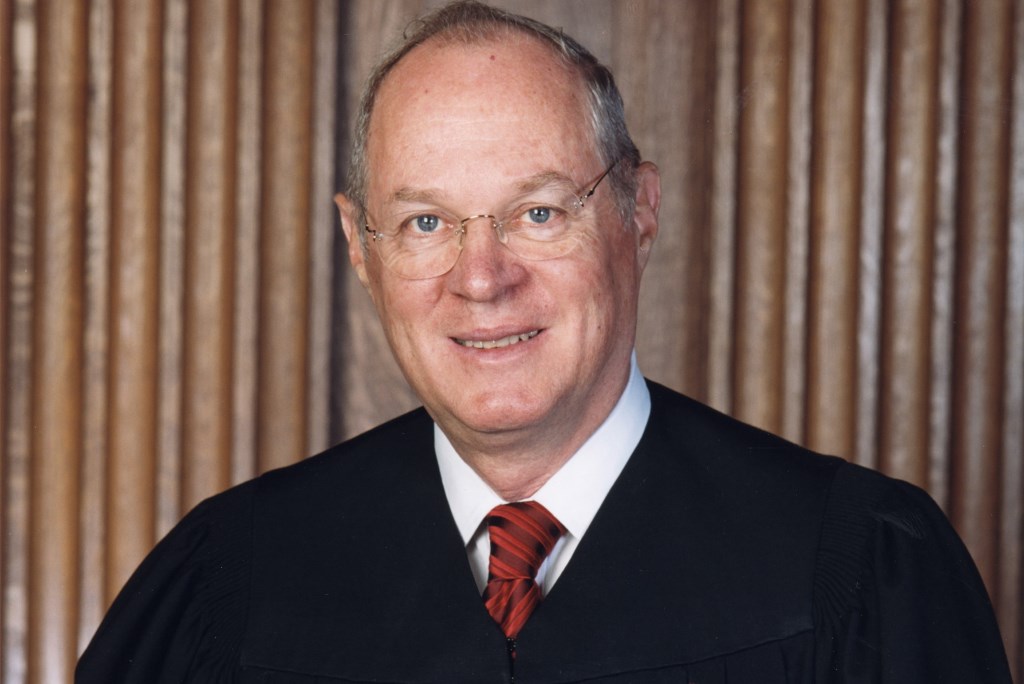The Most Gerrymandered State in America
Study shows Wisconsin most gerrymandered in 42 years. Case is filed in federal court.
Supreme Court Chief Justice Earl Warren once called Baker V. Carr, the 1962 case which led to the “one-man, one-vote” rule, the most important of his tenure. That was saying quite a lot considering his was the court that handed down the watershed Brown decision desegregating America’s schools. But the Baker ruling would end the situation where California had one state senate district with 422 times more voters than the smallest senate district and states across the country had huge inequities. The court declared that all voters should be equal and have equal electoral power in a democracy.
Since Baker and the later Reynold v. Sims case, states were required to draw legislative maps with roughly equal numbers of residents that respected political subdivisions and didn’t discriminate against ethnic or racial minorities. But political parties are always looking for ways to maximize their power, even if it means undermining the principle of one person one vote, and the way to do that since Baker has been through more subtle forms of gerrymandering, aided in recent decades by computerized data.
The result can be seen in Wisconsin, where the Democratic Party won 53.5 percent of the vote statewide in 2012, but just 39 percent of seats in the Assembly. It can be seen in the disadvantage for the Republican Party in Rhode Island, where the GOP won 35 percent of the statewide vote but secured just 13 percent of the seats in the General Assembly.
Such improbable results come through skillful redistricting by the party in power to maximize its electoral advantage. They do this through “packing” and “cracking” districts. Republican leaders in Wisconsin packed Democrats into a few districts that made them highly partisan and thereby wasted a lot of Democratic votes. They also cracked or split formerly swing or Democratic-leaning districts into new districts that gave Republican candidates enough of a margin to be assured of victory.
The result is that, in 2012, the average Democratic Assembly winner needed 37,300 votes to win office, and the average Republican Assembly winner needed only 23,166 votes. That’s a far cry from one-person one-vote.
In Rhode Island the pattern was reversed, so that the packing and cracking resulted in Republican legislative candidates needing far more voters to win office than Democrats.
Two academics, University of Chicago Professor of Law Nicholas Stephanopolous, and Eric McGhee, a research fellow at the Public Policy Institute of Chicago, helped created an approach to statistically measure the exact impact of this kind of redistricting. Their “efficiency gap” measures the ratio of one party’s wasted vote rate to the other party’s wasted vote rate.
Using this approach, Prof. Simon Jackman of Stanford University, a political statistician, has done a watershed study of all elections in the period since the 1970 census, the first census since one-person one-vote became the law of the land. Because full elections data was not available in some states and other local peculiarities, he had to eliminate nine states. The result was an analysis of the efficiency gap in 786 state legislative elections in 41 states from 1972-2014.
And what he found puts the Wisconsin situation into stunning perspective. Looking at Wisconsin’s EG (efficiency gap) of 13 percent in 2012 and 10 percent in 2014, he concludes that in “the entire set of 786 state legislative elections” in 41 states, no other redistricting generated “an initial two-election sequence of EG scores that are each as large as those observed in Wisconsin.” In short, the gerrymandering in Wisconsin as measured by the efficiency gap is “virtually without historical precedent,” he concludes.
“This case, I think, is of potentially historic importance,” Earle told the Shepherd Express.
Chheda and Earle were among a small group of Democrats, brought together by Rep. Fred Kessler (D-Milwaukee), an expert consultant on redistricting, and including Milwaukee NAACP President James Hall, who began meeting to discuss Wisconsin’s lopsided redistricting some time ago and whether anything could be done about it. As the meetings went on, “We talked to academics and experts in the field, we looked at case law,” Chheda notes.
And they gradually formulated a plan which involved raising money from the Chicago-based Joyce Foundation and other funders, to build a team and pay for lawyers and research. Jackman’s study, for instance, was paid for by this grant money.
His study provides a window into American politics that often surprises. While Illinois and Texas are typically stereotyped as states where election corruption is rife, they have had efficiency gaps that are not all that large. Over the 42-year-period Jackman studied the average gap in Illinois has been 6.4 percent pro-Republican and the average gap in Texas has been 3.2 percent pro-Democratic.
The biggest efficiency gaps were in Georgia (20 percent pro-Democratic in 1984) and Delaware (18 percent pro-Republican in 2000). Both of these gaps came some years after the initial redistricting and over time, with population shifts, the inequity can grow larger or smaller.
Connecticut looks like the fairest state: it’s had almost no gap during the 42 years studied and has averaged a zero percent edge for either party.
As for the idea that Wisconsin’s Republicans are only doing what Democrats before them did, that couldn’t be more untrue. The state’s highest Democratic efficiency gap was 2 percent in 1994. The current Republican gap is five times higher than that and was seven times higher in 2012, when there was a higher turnout for the presidential year.
That’s not because of Democratic purity; the party simply never held all power. A split legislature drew the lines in 1971, and disagreements between the parties led to the courts making the decisions in 1981, 1991 and 2001. The result in all four cases was redistricting that had little or no edge for either party.
Nationally, Jackman found the efficiency gap “in the 1970s and 1980s appeared to slightly favor Democrats.” Since then the gap “trends in a pro-Republican direction” and the gaps after the 2010 elections were very high in numerous states. As partisanship has risen in America, that may be reflected in ever-more aggressive efforts to gerrymander districts.
In studying case law, Earle and other lawyers have concluded that four justices of the U.S. Supreme Court are receptive to the idea of overturning badly gerrymandered districting by states, and that swing justice Anthony Kennedy has also hinted he might consider doing so if there was any metric or standard by which you could measure how egregious the gerrymandering is. The concept of an efficiency gap seems a rigorously objective way to answer that call.
Indeed, it would result in both Republican and Democratic gerrymandering being overturned, and would be a way to assure that each person’s vote has equal power in elections. It would be quite remarkable if an effort launched in Milwaukee achieved such a result for the nation.
Murphy's Law
-
Top Health Care Exec Paid $25.7 Million
 Dec 16th, 2025 by Bruce Murphy
Dec 16th, 2025 by Bruce Murphy
-
Milwaukee Mayor’s Power in Decline?
 Dec 10th, 2025 by Bruce Murphy
Dec 10th, 2025 by Bruce Murphy
-
Total Cost of Foxconn Is Rising
 Dec 8th, 2025 by Bruce Murphy
Dec 8th, 2025 by Bruce Murphy























I dont always agree with what Bruce writes but it is hard not to admire his research and ability to dig deep into issues. Cheers, Bruce.
And so we end up not with “representatives” but ideologues on either side. Compromise grows from the conversation that is needed in representative assemblies and it is from that conversation that new ideas of how to address issues evolve. I can’t find the quote or who said it but I think the above encapsulates it. This is an important and well written story but more importantly the effort to “de-gerrymander” (is that a word?)the process of drawing districts is even more important. Thank you, Bruce, for this.
Wow, there’s a glimmer of hope on the horizon that voting could actually become more equitable in Wisconsin and elsewhere.
Thanks for clearly outlining this whole issue, including behind-the-scenes roles of nonprofits and academics. One more reason to keep trying to preserve tenure, academic freedom and funding of state universities…all under attack by Wis. GOP.
Fantastic topic, and incredibly important. The games being played with our voting rights are appalling.
Tony Earl and Kessler showed the GOP how to do it.
WCD does that make it OK?
On board if they will use geometric modeling to draw the districts. Anything else is just trying to cheat the system regardless of party.
“We come up with ideas about the nature of reality, and test them against that reality, allowing the world to falsify the mistaken ones. The ‘conjecture’ part of this formula, of course, presupposes the exercise of free speech. We offer conjectures without any prior assurance they are correct. It is only by bruiting ideas and seeing which ones withstand attempts to refute them that we acquire knowledge.” -Steven Pinker
Obviously, gerrymandering thwarts this process that works for the betterment of the world that our children and grandchildren will inherit. Exhibit # 1 is climate change.
By the way, I want to second Will’s comment. Maybe the questionable reorganization of the DNR will result in the state declaring that independent, rigorous, and thorough journalism is an endangered species. Bruce’s articles are so important now because they provide some depth to understanding the important issues facing us whereas other media seems to be drowning in shallow pools of partisanship.
The SCOTUS just overturned the redistricting in a Southern state, so they’re ripe for considering these cases on a state by state basis. It would be wonderful to see something come from this, Wisconsin as the worst example stands the best chance of success. I think the Roberts court knows that Citizen’s United, among other decisions, has cast them in the history books as a court that basically handed the country over to the plutocrats, so they may be looking for ways to rectify their legacy. That’s the real reason I hope Schmitz and others pursue the John Doe appeal as far as possible, as an example of bought-and-paid-for government and even RICO-type charges, the Wisconsin GOP must be in a class by itself. We really ARE talking about a “vast right-wing conspiracy” The WI Supremes ignored all the nuances of Citizens United and interpreted it as “anything goes”, same as their executive and legislative counterparts.
There was a map published recently showing the US with House districts drawn on a non-partisan basis, mostly on population density, it looked liked a pile of larger and smaller blocks, without regard for socio-economic factors (also known as “partisan advantage”). Maybe parties would actually have to compete on ideas, instead of just “demonizing the other” and playing to our worst angels.
One can dream, right?
kent that is hilarious, please keep writing. act is that Scott the GOP saved state from being Illinois or Milwaukee.
Politicians interfering with American voting rights should be impeached, as they do not qualify as true Americans.
Especially those that ahve been involved in voter fraud the lst 50 years in Milwaukee
“Especially those that ahve been involved in voter fraud the lst 50 years in Milwaukee”
And almost all in staunch suburban GOP districts.
Sounds like a worthwhile effort. But I’d caution against attributing the entire efficiency gap to gerrymandering; Studies have shown that perfectly objective districting simply applying the normal rules of compact districts that respect geographical boundaries will normally produce an efficiency gap that disadvantages Democrats, because there are many more areas where Democrats are almost the entire voting population, than comparable areas for Republicans.
Simply because of this, it would be difficult to entirely eliminate the efficiency gaps in most states, without actively gerrymandering to achieve it.
Hope they do file lawsuits that go after both parties’ gerrymanders. That’s not going to be the course of least resistance, they’re going to get a lot of pushback on that from some of their funding sources, and fellow voting rights activists.
Mr. Murphy,
I have a quick curiosity. In your article, you state that “[i]n studying case law, Earle and other lawyers have concluded that four justices of the U.S. Supreme Court are receptive to the idea of overturning badly gerrymandered districting by states, and that swing justice Anthony Kennedy has also hinted he might consider doing so if there was any metric or standard by which you could measure how egregious the gerrymandering is.” To which cases were they referring to?
I don’t doubt that your reporting is correct. In my brief searches on the topic I couldn’t find a study by Earle on the topic. I would gladly take a citation to the study as an answer to the question. Again, not attacking your reporting, just looking for the information you based it on as source material for a separate project – specifically looking for the cases that Earle and others are basing their conclusion on.
Best,
Will
@Will Bruce Murphy is on vacation this week, but I’ll leave him a note to get back to you.
Will, the main case that lawyers with this group site is LULAC v Perry. A related case is Vieth v Jubilerer.
I luv WICD replies.
Here’s a questions for him:
What do you think about the concentration of legislative oversight and power to the executive office?
Do you believe that people escpecially if there not your brand of, unaware ethically challenged with situational principles racist conservative, have less input in the Democratic process by removing oversight power and rule making ability from their elected representatives and giving it to a few powerful conservatives?
I appreciate the effort being put into creating an absolute standard so judges can know gerrymandering when they see it. And I submit that a relative standard based on Stephanopolous and McGhee’s work could be enough. In essence all we need is a way to judge one map against another.
If it were established that all other things being equal the state district map with the smallest number of wasted votes must be used then I could envision a process like this:
1. Minimum 3 months public comment period
2. Within the public comment period anyone can propose a new map
3. Any map with fewer wasted votes than the current candidate map(s) must be considered — can sue if not
4. To choose a map with more wasted votes the state government must provide an objective standard — which could be adjudicated in cases of disagreement.
5. State government can then choose between those map(s) which meet all agreed objective criteria and have the minimum wasted votes.
Pro’s:
This approach would eliminate searching for an arbitrary “best” wasted vote percentage while creating a standard that leaves room for people to work out their differences. Approach preserves the designed unequal outcomes of the districting process while providing a mechanism to protect 4th Amendment rights.
Con’s:
Might increase the amount of litigation involved in redistricting.
WCD seems to dislike commotion and democracy. Then again he defends everything his authorian masters do.